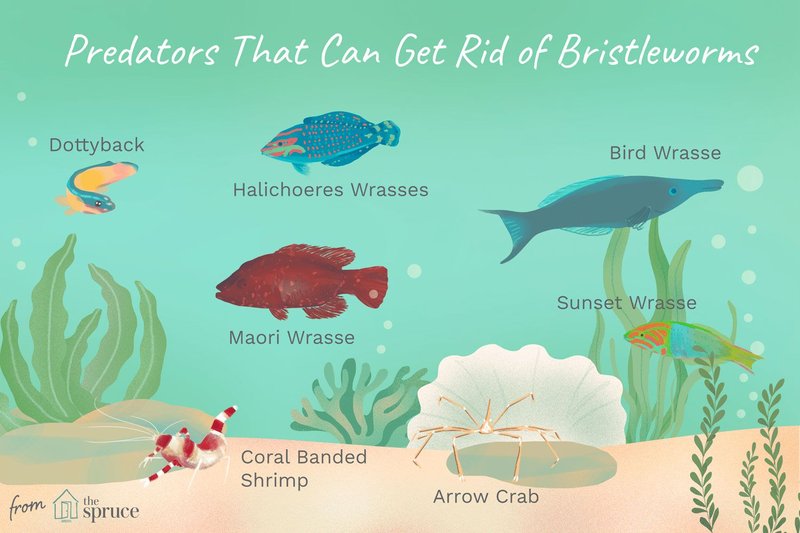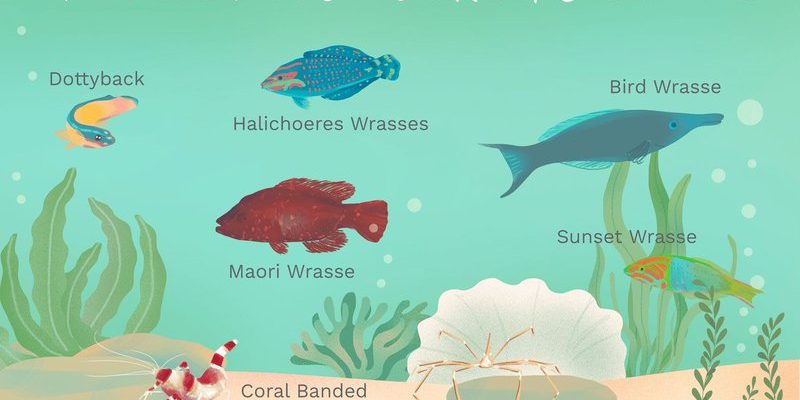
When considering how to deal with a bristle worm issue, it’s important to embrace nature’s own solutions instead of jumping straight to chemical treatments. This approach is not only more eco-friendly, but it often leads to healthier ecosystems. In this article, we’ll dive into the top natural predators for controlling bristle worms, exploring how these creatures fit into the bigger picture of marine life and aquarium health.
What Are Bristle Worms?
Bristle worms are segmented worms found in both marine and freshwater environments. These little guys can range from the size of a pencil to several feet long, depending on their species. They are usually noticeable by their bristles—tufts of hair-like structures that can be quite intimidating. While they contribute to breaking down detritus and enriching the substrate, their overpopulation can lead to problems, especially in closed systems like aquariums.
Honestly, if you’ve ever seen one of these worms wriggling through the gravel, you might have felt a combination of awe and disgust. While they’re not inherently harmful, their rapid reproduction can disrupt the balance of your tank. They feed on leftover food, dead fish, and algae, but when there’s too much food available, they can proliferate out of control. Understanding their behavior and role in the ecosystem is crucial before we discuss the predators that can help manage their populations.
Why Use Natural Predators?
So, why should you consider natural predators for controlling bristle worms? The main reason is simple: it’s about maintaining a balanced ecosystem. Using natural methods can significantly reduce reliance on harsh chemicals, which can harm beneficial organisms and create other issues in your aquarium or marine environment.
Natural predators are like the superheroes of the sea. They help manage the pest population without causing collateral damage to other inhabitants. Think of it as inserting nature’s own pest control into your tank. Not only can these predators help curb bristle worm populations, but they also bring their own benefits to the ecosystem, including nutrient cycling and enhancing biodiversity.
The key here is to find the right balance. Just like you wouldn’t want an alligator in your backyard pond, the predators you choose should be compatible with your existing aquatic life. Choosing the right species can ensure that your tank stays healthy and vibrant while keeping bristle worms at bay.
Top Natural Predators for Bristle Worms
When it comes to controlling bristle worms naturally, several predators can help. Here’s a rundown of the most effective ones:
- Wrasses: Many species of wrasses, such as the Six-Line Wrasse, are known to feast on bristle worms. They are active hunters and will root around the substrate for food, effectively keeping the bristle worm population in check.
- Coral Band Shrimp: These little critters are not just beautiful additions to your tank; they have a taste for bristle worms too! With their long claws, they can pick off smaller worms and help reduce their numbers.
- Sea Stars: Certain starfish, like the Linckia species, are known for their appetite for worms, including bristle varieties. They move slowly across the substrate, using their tube feet to find and consume these worms.
- Filefish: Often overlooked, filefish have a knack for snacking on bristle worms. Their unique body shape allows them to maneuver into tight spaces, making them effective hunters.
- Some Crabs: Certain crab species, like the Arrow Crab, are known to eat bristle worms as part of their diet. However, be cautious when introducing crabs, as some may also target your other reef inhabitants.
Selecting the right predator for your setup can feel like playing a game of matchmaking. You want to ensure that they don’t harm other tank residents while doing their job. Always consider the compatibility and temperament of these creatures before adding them to your tank.
How to Introduce Predators Safely
Now, introducing these predators safely is crucial. You wouldn’t simply throw a cat into a room full of mice without thinking twice, right? The same goes for your aquarium. Here’s how to make sure your introduction goes smoothly:
1. **Quarantine New Arrivals:** Before introducing any new predator to your tank, it’s smart to keep them in a quarantine tank for a few weeks. This helps to monitor their health and behavior and prevents potential disease transmission.
2. **Research Compatibility:** Check if the species you choose can live peacefully with your current tank inhabitants. Community dynamics can be sensitive, and you wouldn’t want an aggressive predator to disrupt your tank’s harmony.
3. **Gradual Introduction:** Start by adding a small number of predators to see how they adapt to their new environment. If they thrive and successfully reduce the bristle worm population, you can consider adding more.
4. **Monitor Behavior:** After the introduction, keep an eye on both the predators and your existing tank life. Look for signs of stress or aggression to ensure everyone is getting along.
By taking these steps, you can set the stage for a healthy ecosystem where predators can help maintain bristle worm populations without compromising the well-being of your other aquatic friends.
Other Considerations When Managing Bristle Worms
While natural predators can be effective, it’s essential to consider other factors that can influence bristle worm populations in your aquarium:
– **Reduce Overfeeding:** One of the best ways to control bristle worm populations is to stop giving them too much to eat! If there’s less leftover food in the tank, they won’t have as much to thrive on. Make sure to only feed your fish what they can consume in a few minutes.
– **Maintain Water Quality:** Healthy water conditions promote the growth of beneficial bacteria and organisms that can outcompete bristle worms. Regular water testing and maintenance can help keep everything balanced.
– **Regular Tank Cleanup:** Consider implementing a regular cleaning schedule where you remove uneaten food and debris. This not only helps control bristle worm populations but also improves the overall health of your aquarium.
Remember, controlling bristle worms isn’t just about deploying predators; it’s about creating a balanced ecosystem. When all the elements work together, you’ll enjoy a thriving tank.
Managing bristle worms in your aquarium can feel daunting, but embracing natural predators is a smart and effective strategy. By introducing friendly hunters like wrasses and coral band shrimp, you can create a balanced environment where both predators and prey coexist harmoniously.
Alongside proper care practices—like reducing overfeeding and maintaining clean water conditions—you’ll find that your tank can thrive with fewer bristle worms. Just like in nature, balance is key. So, take your time, do your research, and enjoy the journey as you cultivate a vibrant, healthy aquarium ecosystem. Happy fish-keeping!

